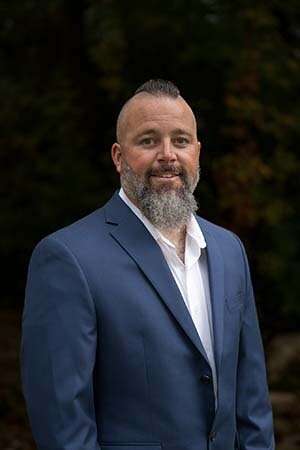Chronic wounds can significantly impair patients’ quality of life by compromising their physical and emotional well-being. Fortunately, wound care nurses are trained to not only save limbs but also change lives.
Nurses in wound care are at the forefront of healing chronic wounds, preventing serious complications, and restoring patients' independence. Their expertise goes beyond dressing changes to educating, advocating, and providing support that makes a tangible difference.
The burden of chronic wounds

Diabetic wounds, pressure injuries, and venous leg ulcers are just a few types of chronic wounds that affect millions of patients. In the United States alone, 2.5% of the population is affected by chronic wounds. These wounds can take anywhere from weeks to years to heal, increasing the risk of infection or hospital readmission.
They can also cause:
- Severe pain or discomfort
- Limited mobility
- Emotional distress
- Financial strain
Ottamissiah “Missy” Moore, BSN, RN, WCC, DWC, CHPN, CAEd, a wound care nurse from the Washington, D.C., area, said managing chronic wounds can be especially challenging for some patients, such as those with multiple chronic conditions (e.g., diabetes, vascular disease) and individuals facing barriers, such as transportation issues or food insecurity.
“Addressing these challenges requires a holistic approach that extends beyond wound management,” said Moore.
Support from the start
Early intervention can be the difference between successful outcomes and long-term complications. If wounds aren’t properly cared for, the risk of infection increases, which can lead to sepsis or the need for surgical interventions, such as debridement or even amputation.
Equipped with evidence-based expertise, nurses in wound care use a proactive approach when managing wounds.
“It’s important to approach all patients as if they’re at risk for amputation,” said Moore, who has been a wound care nurse for over 30 years. “The approach should be tailored to the patient’s specific needs, considering factors such as underlying conditions, circulation status, and wound severity.”
She added that this, coupled with baseline laboratory tests and diagnostic evaluations, provides critical reference points for monitoring progress and detecting early signs of deterioration.
According to Moore, the goal is to have a comprehensive, individualized plan that can optimize outcomes, reduce the risk of infection, and support limb preservation efforts, which can significantly impact patient recovery and quality of life.
Emotional well-being and chronic wounds
Moore makes it a point to ask her patients about their mental and emotional health. “Chronic wounds may cause pain, frustration, and even depression, making it essential [for us] to check in with patients about their emotional state during visits,” she said.
Emotional well-being affects not only how wounds heal but also how empowered patients feel in their care. In fact, a study revealed the link between mental health and chronic wounds, with 30% of patients with chronic wounds experiencing depression or anxiety.
Devin Kramer, MHA, BSN, RN, WCC, a wound care manager from Bellefontaine, Ohio, said it’s also important to stop and listen to a patient’s goals.
“Oftentimes patients want their wounds healed, but many times there are other ‘side goals’ that they want, and these side goals are often markers that they are gauging success on,” he said. “Whether that is being able to shower, not being able to smell their wound, being able to attend a special event or vacation, it is important to spend time with and really get to know your patients.”
According to Kramer, nurses who care for patients as they would their friends and family develop a better understanding of the challenges patients navigate every day. While the healing journey may not always go as planned, it’s important to remember that setbacks are a natural part of the process, and that’s OK.
“The moment that we don’t take this into consideration or don’t listen and value patients’ opinions, you lose that level of trust and support,” he said.
The power of patient education and advocacy

In wound care nursing, patient advocacy means listening, educating, and ensuring patients receive the best care.
Advocacy begins with understanding what truly matters to the patient. Sometimes, healing a wound is more than just tissue repair — it’s about restoring a patient’s quality of life by helping them return to activities that bring them joy.
Kramer shared an experience he had with a patient with a chronic wound who was distraught over how long his wound would take to heal.
“He wanted us to work quickly and get him back to his normal self, almost to the point of having unrealistic expectations,” he said. “I educated him about chronic wounds and reset his expectations for healing times.”
Kramer said the patient was also worried because he wanted to be healed before baseball season. He sang the National Anthem for a local semi-professional baseball team and didn’t want to miss any games.
Kramer and his wound care team used an advanced treatment to enhance his healing.
“Ultimately, we were able to speed his healing and get him healed up and back in front of the ballpark crowd,” said Kramer.
Healing wounds and healing people
Behind every wound is a person with a story, a journey, and a desire to be cared for with compassion and expertise.
"One of the most rewarding things for me is seeing the excitement on patients’ faces when they’re healed and ready for discharge, followed by the look of sadness because they won’t be coming back for more appointments. It’s a testament to the great work that my staff are doing,” said Kramer.
He added that because wound care is a team-oriented and patient-focused field, you can really get to know your patients and things about them.
Healing may be the goal, but the relationships built along the way often leave a lasting impression. Patients' stories and gratitude, and even their reluctance to say goodbye, demonstrate what truly matters.
Because for wound care nurses, success isn’t measured in percentages — it’s measured in healing.













